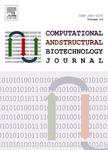版权所有:内蒙古大学图书馆 技术提供:维普资讯• 智图
内蒙古自治区呼和浩特市赛罕区大学西街235号 邮编: 010021

作者机构:China Agr Univ Coll Biol Sci State Key Lab Plant Physiol & Biochem Beijing 100193 Peoples R China Int Ctr Bamboo & Rattan Inst Gene Sci & Industrializat Bamboo & Rattan Re Beijing Bamboo & Rattan Sci & Technol Key Lab Natl Forestry & Grassland Adm Beijing 100102 Peoples R China Qingdao Agr Univ Coll Agron Qingdao Shandong Peoples R China
出 版 物:《COMPUTATIONAL AND STRUCTURAL BIOTECHNOLOGY JOURNAL》 (Comput. Struct. Biotechnol. J.)
年 卷 期:2021年第19卷
页 面:2708-2718页
核心收录:
基 金:National Natural Science Foundation of China [31970629 31971733 31771467]
主 题:Moso bamboo Genome annotation Transcriptomic data Epigenomic data H3K4me3
摘 要:Bamboo, one of the most crucial nontimber forest resources worldwide, has the capacity for rapid growth. In recent years, the genome of moso bamboo (Phyllostachys edulis) has been decoded, and a large amount of transcriptome data has been published. In this study, we generated the genome-wide profiles of the histone modification H3K4me3 in leaf, stem, and root tissues of bamboo. The trends in the distribution patterns were similar to those in rice. We developed a processing pipeline for predicting novel transcripts to refine the structural annotation of the genome using H3K4me3 ChIP-seq data and 29 RNA-seq datasets. As a result, 12,460 novel transcripts were predicted in the bamboo genome. Compared with the transcripts in the newly released version 2.0 of the bamboo genome, these novel transcripts are tissue-specific and shorter, and most have a single exon. Some representative novel transcripts were validated by semiquantitative RT-PCR and qRT-PCR analyses. Furthermore, we put these novel transcripts back into the ChIP-seq analysis pipeline and discovered that the percentages of H3K4me3 in genic elements were increased. Overall, this work integrated transcriptomic data and epigenomic data to refine the annotation of the genome in order to discover more functional genes and study bamboo growth and development, and the application of this predicted pipeline may help refine the structural annotation of the genome in other species. (C) 2021 The Author(s). Published by Elsevier B.V. on behalf of Research Network of Computational and Structural Biotechnology.